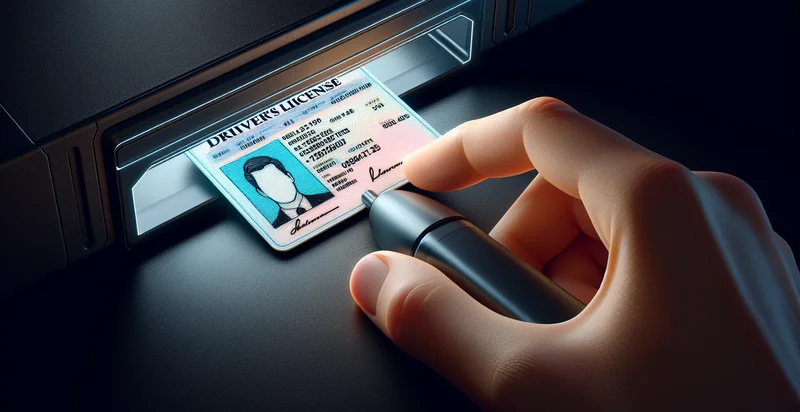Identify if drivers license number is in plaintext
using AI
Below is a free classifier to identify if drivers license number is in plaintext. Just input your text, and our AI will predict if the driver's license number is exposed - in just seconds.

Contact us for API access
Or, use Nyckel to build highly-accurate custom classifiers in just minutes. No PhD required.
Get started
import nyckel
credentials = nyckel.Credentials("YOUR_CLIENT_ID", "YOUR_CLIENT_SECRET")
nyckel.invoke("if-drivers-license-number-is-in-plaintext", "your_text_here", credentials)
fetch('https://www.nyckel.com/v1/functions/if-drivers-license-number-is-in-plaintext/invoke', {
method: 'POST',
headers: {
'Authorization': 'Bearer ' + 'YOUR_BEARER_TOKEN',
'Content-Type': 'application/json',
},
body: JSON.stringify(
{"data": "your_text_here"}
)
})
.then(response => response.json())
.then(data => console.log(data));
curl -X POST \
-H "Content-Type: application/json" \
-H "Authorization: Bearer YOUR_BEARER_TOKEN" \
-d '{"data": "your_text_here"}' \
https://www.nyckel.com/v1/functions/if-drivers-license-number-is-in-plaintext/invoke
How this classifier works
To start, input the text that you'd like analyzed. Our AI tool will then predict if the driver's license number is exposed.
This pretrained text model uses a Nyckel-created dataset and has 2 labels, including Contains Plaintext License Number and Does Not Contain Plaintext License Number.
We'll also show a confidence score (the higher the number, the more confident the AI model is around if the driver's license number is exposed).
Whether you're just curious or building if drivers license number is in plaintext detection into your application, we hope our classifier proves helpful.
Related Classifiers
Need to identify if drivers license number is in plaintext at scale?
Get API or Zapier access to this classifier for free. It's perfect for:
- Fraud Detection: Implementing a driver’s license number plaintext identifier can help financial institutions and insurance companies detect identity theft and fraudulent activities. By flagging documents that contain easily readable driver’s license numbers, organizations can undertake additional verification steps before processing transactions.
- Privacy Compliance Monitoring: Organizations must comply with privacy regulations like GDPR or CCPA, which require personal data to be processed securely. By identifying plaintext driver’s license numbers, businesses can ensure that sensitive information is encrypted or redacted before being shared or stored.
- Document Review Automation: In legal and administrative processes, reviewing documents for personal information can be tedious. By automating the identification of plaintext driver’s license numbers, firms can streamline the document redaction process, making it faster and more efficient.
- Data Leak Prevention: Organizations can use the identifier to scan for potential data leaks in their systems. Should driver’s license numbers be found in plaintext across internal communications or databases, immediate remediation actions can be taken to prevent unauthorized access.
- Customer Onboarding: During the customer onboarding process, it’s essential to verify identity while maintaining security. The identifier can be integrated into onboarding software to check if driver’s license numbers are stored securely, preventing exposure to unauthorized personnel.
- Compliance Audit Preparation: Companies subject to audits can leverage this identifier to assess their data handling practices. Regular checks for plaintext driver’s license numbers in their systems can demonstrate due diligence in protecting customer information and help avoid regulatory penalties.
- Training and Awareness Programs: Organizations can use the insights gained from identifying plaintext driver’s license numbers to enhance employee training around data security. By highlighting real examples of data that should be secured, employees can become more vigilant in handling sensitive information.


